There has always been a synergistic relationship between the trade centers and the small towns that support them. The ICA envisions an integrated economic structure through which the Service Center and their “remote neighborhoods” establish an mutually viable relationship
TCR’s initial task in building a stronger more viable community was to define it. Based upon the ticket holders of cultural, and athletic organizations and corporate sales territories we defined a dynamic boundary based upon socio-economic orientation i.e. the market, not on geologic features and pioneer survey lines. This first ever Information Age Community embraced Minnesota and parts of North and South Dakota, Iowa and Wisconsin. These integrated Information Age Communities create more competitive regions in the global marketplace. Looking nationally, there are an estimated 32 such IACs.
Within the Minneapolis-St Paul IAC there are 65 traditional trade centers. Each of which has benefited from the consumers and employees living in the 10 or more small towns that support that trade center. The trade center does nothing to support the viability of these small towns. A new, more balanced relationship is required.
The urban center of the IAC has a similar relationship as it is supported by the 1000 towns in its service area. While it provides services and products throughout the IAC, it has no strategy to support the small town viability. The IAC is designed to provide leadership, technology and transit throughout the IAC.
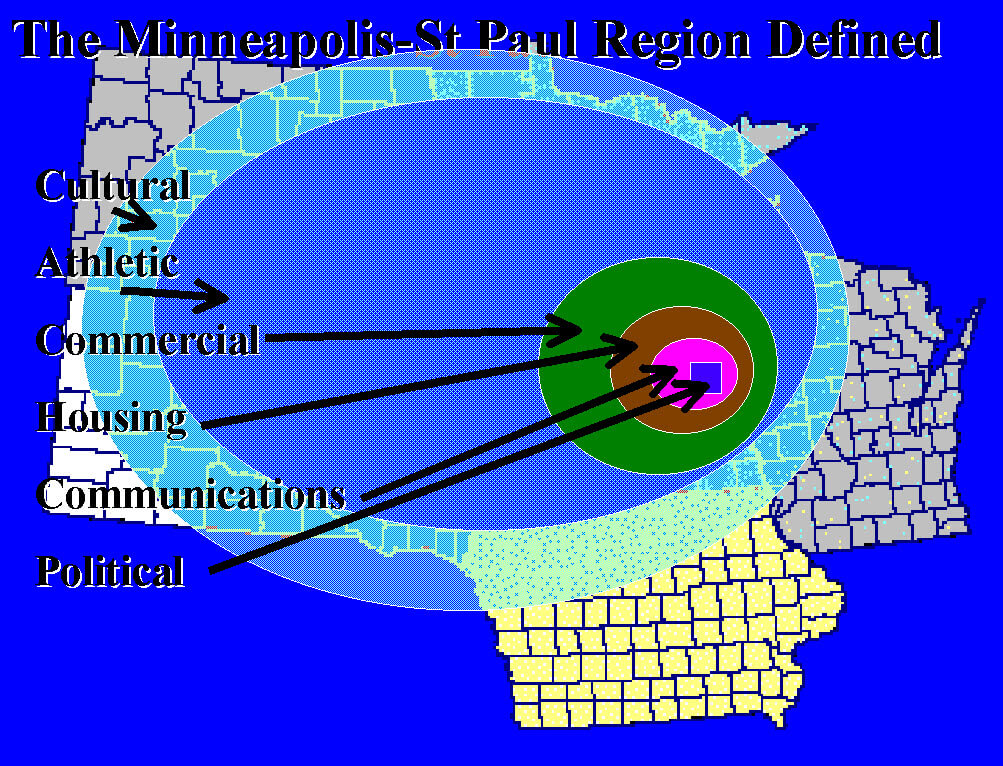
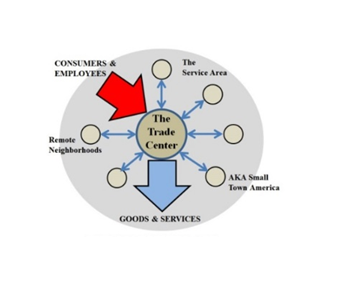
Each Solution Created a new Challenge; Each Challenge Provided a New Opportunity

Community Infrastructure Supports the Community Solution

A single community management structure supplements the thousands of political jurisdictions to set IAC vision and policies while standardizing service delivery.

The SoTA is delivered through a tri-level TeleCenter Network. The result is an integrated IAC market force where the rural and urban markets are equal

With a comprehensive virtual network, it is critical that it be supplemented with a transit system to support commuters, freight, tourism etc
Community Collaboration, Sector Engagement, Commitment to Economic Integration, and Fairness

Restoring viability to Small Town America is not about getting grants for individual towns nor is it about studying the demise and tracking the decline. It is about developing a strategy with sufficient power to reverse the damage of the Industrial Age. The 1995 graphic is absolutely scary but reversing this pattern means changing the focus. The Community Index was developed to identify the basic scale of community; the Community Typology was that result. With that as an analytic structure we can begin defining the underlying forces that must be overcome, primarily the demographic imbalance.
Every Initiative Should First Answer how it will Help Restore Demographic Viability
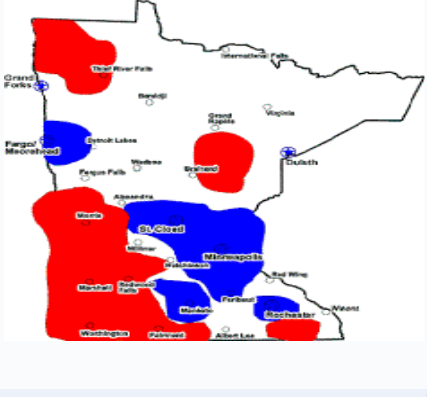
A 1995 graphic depicted those areas of Minnesota that were no longer able to sustain their population.
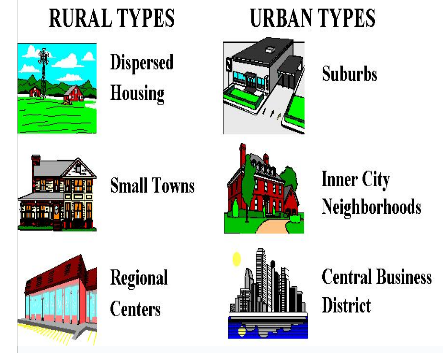
Examining an individual community was ineffective. We created the Community Typology so we could analyze the health of the six types
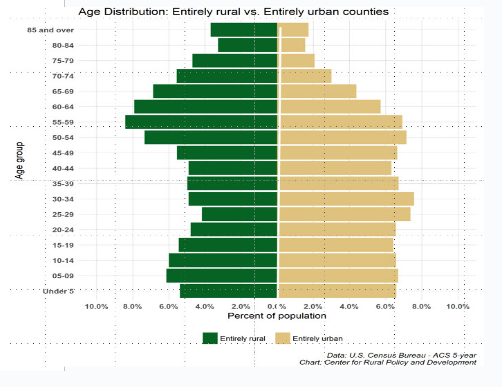
TCR has studied demographic data to confirm the decline. This age curve imbalance illustrates the need for young family relocation
Led by an Innovative Managerial System The IAC is Empowered by Physical and Virtual Services

TCR has estimated that there are thirty-two ICA communities
The Information Age Community structure has the potential to drastically change the lives in each of the six community types as well as our individual communities. If society can become as interested in community viability as it is in the many $19 a month issues, viability will be restored.
The biggest challenge for achieving the potential of the Information Age Community is the almost universal feeling that: “There’s nothing we can do about it”
That defeatist attitude must be overcome!
Digitization improves how you do things, Virtualization explores where you do them
The infrastructure to support the virtual world is already here, the implementing policy however is not. It is critical that the ROI of virtualization becomes clear. When it all matures, individuals will have the Freedom of Residential Choice with all that it implies. In support of the virtualization process, TCR has developed a Suite of Assessments to explore the benefits of virtualization in a variety of environments. These tools apply in several key areas:
Only When the Community Fully Engages!
After 200+ years of centralization, creating an environment supportive of the ICA’s decentralization movement requires that it become as powerful as that which it wishes to supplant. A major mindset change must be accomplished. The following steps are key:
1. Create a video of residents impacted by the loss of their social support structure and the changes in their housing profile
2. Pursue media appearance and speaking forums to support community engagement
3. The Newspaper Story
1. Equipment and training to support the Regional Center
2. Service collaborations to support the Community TeleCenter
Phone Number
Jfsanger@telecommuter.org
4315 Virginia Avenue St Paul, MN 55126
The Information Age Community incorporates AI in many of its tools and strategies. It truly allows society to embrace the many benefits of the Information Age and the Freedom of Residential Choice that it provides. All six community types are affected by this reversal of the 200 year Industrial Age mindset and each must build upon the benefits of the old even as they adopt the new opportunities.
©All rights reserved,2025 Tele-Commuter Resources,Inc. Design and development by VibgyorWeb Technologies.